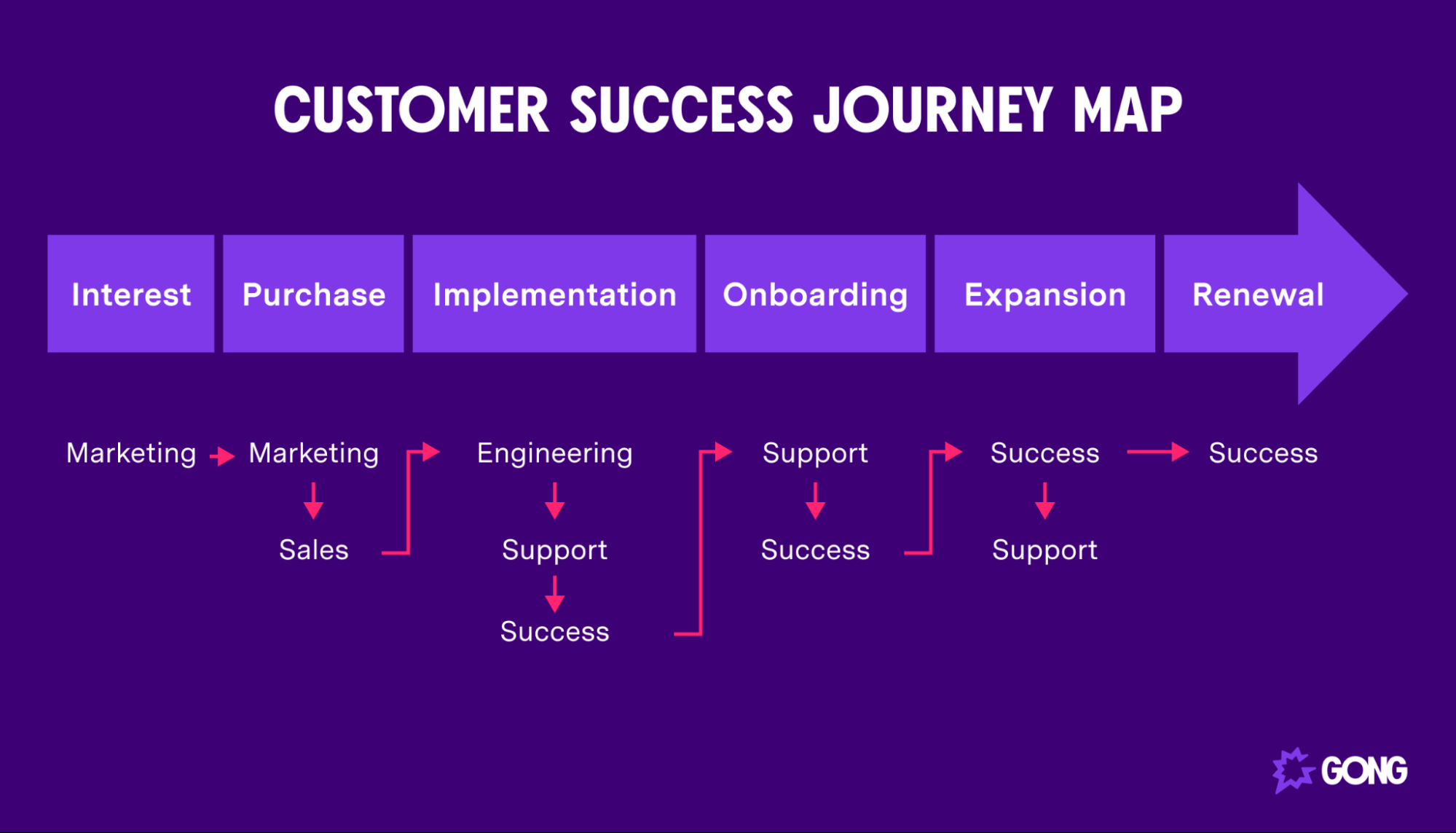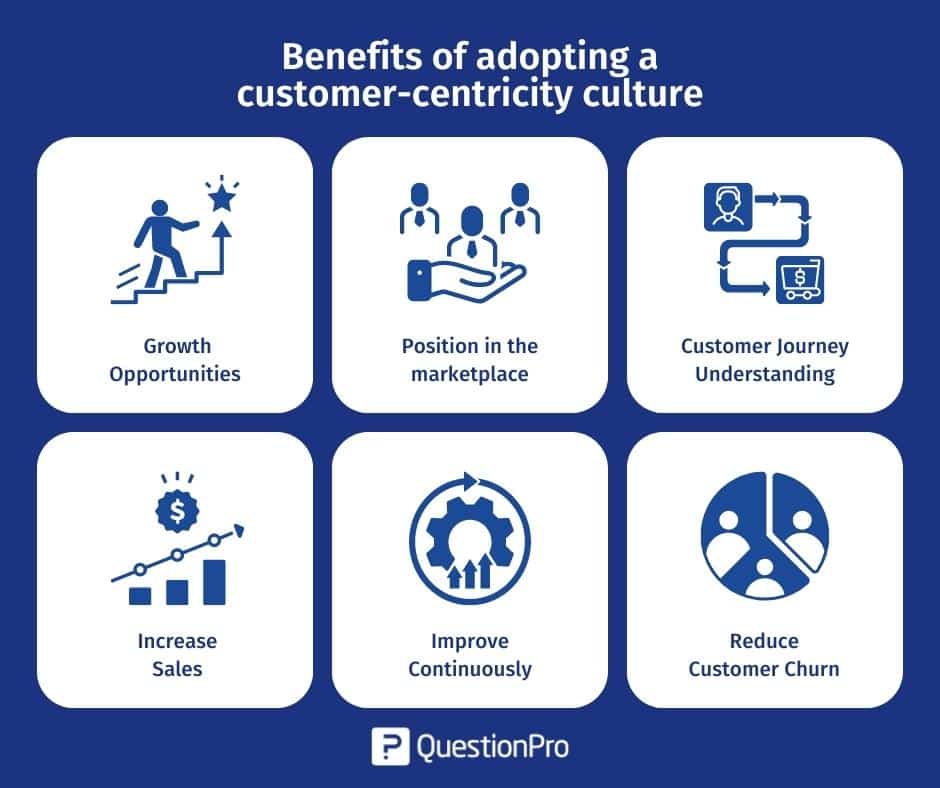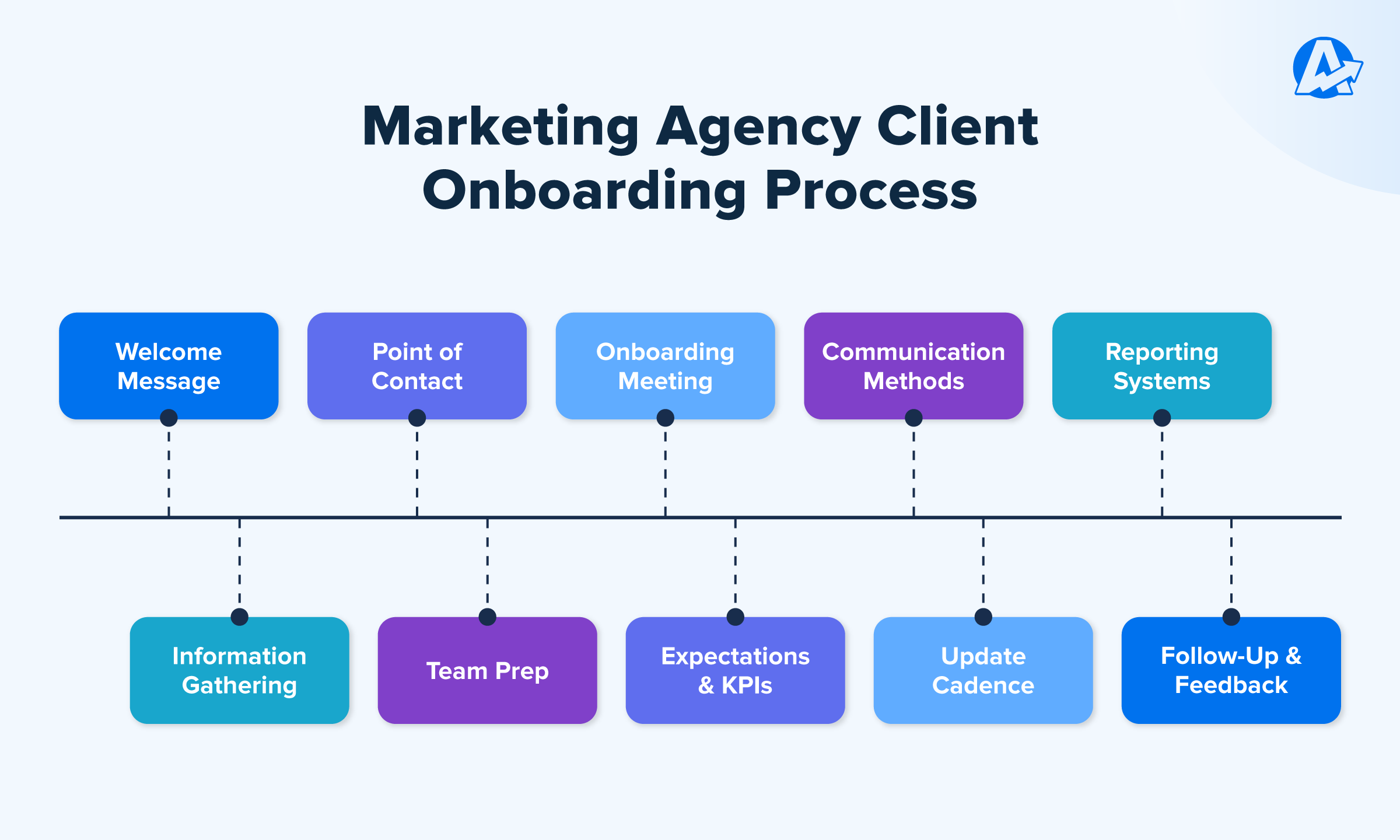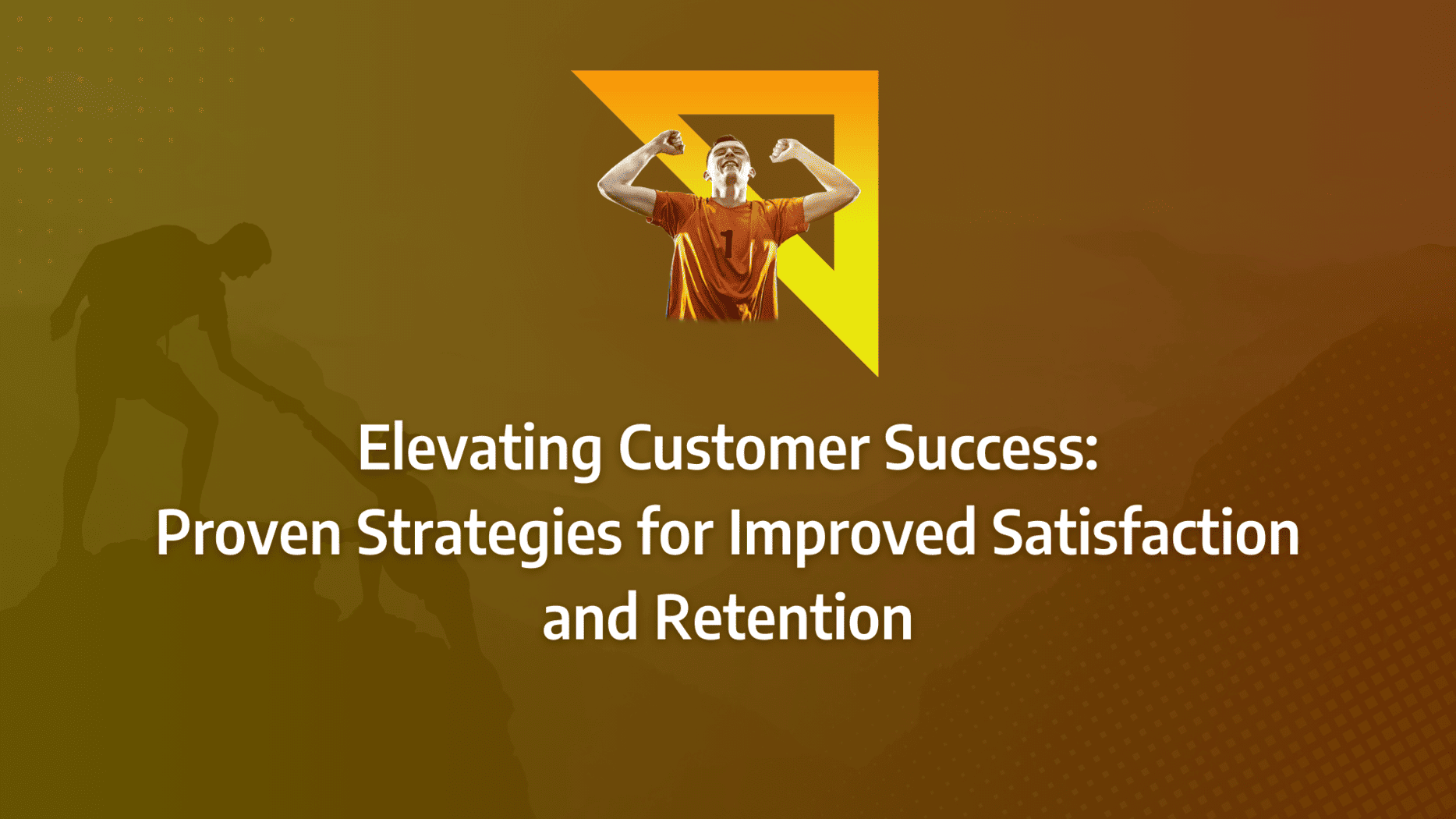Imagine this: despite your best efforts, customers are slipping away, and you’re left wondering what went wrong. It’s a common challenge in today’s competitive market, where customer expectations are higher than ever. The truth is, ensuring customer satisfaction isn’t just about providing a great product—it’s about guiding your customers to success every step of the way.
That’s where a robust customer success strategy comes into play. In this post, we’ll dive into the key components that make up an effective customer success strategy, from personalised onboarding to proactive engagement and beyond. Whether you’re looking to reduce churn, boost customer lifetime value, or simply ensure your customers are getting the most out of your product, these proven strategies will help you achieve your goals.
- Segment Your Customers Effectively: Tailor your customer success strategy by segmenting customers based on their needs and behaviours, allowing for more personalised and effective engagement.
- Optimise Onboarding Processes: Develop a comprehensive onboarding programme to ensure customers are fully equipped to use your product, setting the stage for long-term success and satisfaction.
- Stay Proactively Engaged: Implement regular check-ins and health checks to maintain customer satisfaction and address potential issues before they escalate.
- Utilise Feedback Loops: Continuously gather and analyse customer feedback to refine your products and services, ensuring they meet evolving customer needs.
- Leverage Technology: Use customer success platforms and CRM systems to automate and track interactions, enhancing efficiency and scalability in managing customer relationships.
- Align Sales and Customer Success Teams: Ensure seamless transitions from acquisition to retention by aligning sales and customer success teams, sharing insights and data for better customer outcomes.
- Measure Success with KPIs: Regularly monitor KPIs like NPS, CLTV, and churn rate to evaluate the effectiveness of your customer success strategies and make data-driven improvements..
The Importance of Customer Success
To understand the significance of customer success, it’s essential to start with a clear definition. Customer success occurs when your customers achieve the goals that led them to your product or service. If your brand fails to deliver on these goals, the customer’s experience falls short, and the relationship is at risk.
What Matters Most?
Defining customer success metrics early is crucial for aligning teams and ensuring everyone focuses on delivering real value. Clients often discover that fostering a customer-centric culture not only enhances relationships but also leads to better overall business outcomes. Moreover, aligning customer success efforts with broader business goals is vital, as it drives accountability and ensures that everyone is working towards common objectives.Get In Touch
Customer success can be defined more precisely by considering each stage of your customer’s journey:
- Lead Acquisition: Success here means that your website provides visitors with the precise information they sought when searching for related terms.
- Purchase Stage: This involves sales copy that convincingly communicates the value of your product or service and ensures a seamless payment process.
- Onboarding Stage: New customers should find it straightforward to begin using your product or service.
- Adoption Stage: At this stage, your product or service should add measurable value to the customer’s personal or professional life.
- Escalation Stage: Customers need to find quick and effective solutions to any support issues.
- Retention Stage: Success in retention means customers are eager to buy from you again and recommend your brand to others.

So, what are the critical elements that underpin a robust customer success strategy in today’s economy? Let’s explore.
1. Increase Customer Retention
Shifting your focus from acquiring new customers to retaining existing ones is crucial. Consider your customers as a farmer views an apple orchard—each tree requires daily care and attention to yield fruit. Similarly, customers need consistent support and engagement to remain loyal.
Strategies to Enhance Retention:
- Proactive Support: Provide immediate assistance when customers face issues with your product or service. Quick resolution of problems ensures customers continue to perceive value and feel cared for.
- Subscription Management: If a customer misses a payment, rather than downgrading their service, place their subscription on hold. Reactivation should be as simple as clicking “accept” or updating payment details.
- Offer Discounts: For customers considering cancellation due to price, offer discounts. This can lead to future upsell opportunities. If a customer does cancel, follow up to understand why and address their concerns using customer success software to track and manage these interactions.
2. Improve Customer Satisfaction
Measuring customer satisfaction through a scoring system helps track progress and identify areas for improvement. Implementing a customer feedback programme is vital for gathering data and spotting trends.
Steps to Enhance Satisfaction:
- Feedback Collection: Regularly gather customer feedback to gauge satisfaction levels. This data helps identify unhappy customers and improve nurturing programmes.
- Customer Success Software: Utilise software to manage feedback and monitor satisfaction scores efficiently. Check these scores at critical points in the customer journey, such as post-onboarding, to pre-empt potential churn.
3. Reduce Churn
While some churn is inevitable, it can be minimised by demonstrating the value of your product or service consistently. Monitor customer engagement and address any lack of utilisation.
Churn Reduction Techniques:
- Value Communication: Continuously show customers how your product or service benefits them. Ensure they are aware of all functionalities and how to maximise their use.
- Educational Support: Educate customers on features they may not be using. Providing contextual, intelligent, and comprehensive data helps customers understand the full value of your offering.
- Customer Understanding: By ensuring customers understand how your product positively impacts their lives, you can significantly reduce the likelihood of churn.
By implementing these strategies, you can develop a comprehensive customer success framework, create a detailed customer success roadmap, and establish an effective customer success team structure. This will not only enhance your customer success strategy but also build a robust customer success plan that drives sustained growth and satisfaction.
Customer Experience vs. Customer Success
What is Customer Experience?
Customer experience, or CX, encompasses the overall impression customers form based on their interactions with a brand throughout their entire journey. Every touchpoint—be it pre-purchase, purchase, or post-purchase across various channels—is optimised to ensure the best possible experience.
A stellar customer experience hinges on understanding and exceeding customer needs, preferences, and expectations. This involves everything from designing intuitive user interfaces and providing exceptional customer service to fostering emotional connections with customers. Hence, it is broader in scope than customer success.
Examples of Customer Experience Across Industries:
- Hospitality Sector: A luxury hotel may offer a personalised check-in experience, attentive staff, and meticulously designed guest rooms to create an enjoyable stay. This is their attempt at delivering an exceptional customer experience.
- Retail Industry: An online clothing store might ensure a user-friendly website, easy return policies, and quick delivery options to provide a seamless and convenient shopping experience for customers.
Distinguishing Customer Success from Customer Experience
Breadth of Focus:
Customer experience (CX) encompasses a wider scope compared to customer success. CX is dedicated to nurturing a positive relationship between a company and its customers throughout the entire journey, from the moment of brand awareness through to the end of the customer lifecycle. In contrast, customer success zeroes in on specific aspects of this journey, particularly post-purchase, where the focus is on helping customers effectively utilise the product or service to achieve their goals.
Measurement Metrics:
The way customer experience and customer success are measured varies considerably. CX relies on metrics like customer satisfaction scores (CSAT), Net Promoter Scores® (NPS), rates of customer acquisition, and conversion statistics. On the other hand, the success of customer success efforts is gauged by metrics such as customer lifetime value, retention rates, churn rates, Customer Effort Scores, and the frequency of repeat purchases.
Application Across Industries:
In industries that operate on subscription-based models—such as B2B services or SaaS—customer success teams are critical. These teams are tasked with ensuring that customers continue to find value in their subscriptions, which is vital for business sustainability. While customer success is more prominent in these sectors, customer experience roles are widespread across all industries, each focusing on enhancing the overall customer journey and satisfaction.
Collaboration Between Customer Success and Customer Experience:
Although they serve different functions, customer success and customer experience frequently overlap and are both crucial to achieving long-term business objectives. These roles work in tandem to support company-wide goals like boosting revenue and strengthening customer loyalty. A superior customer experience is particularly beneficial in driving cross-selling and upselling opportunities. Additionally, according to findings from the Zendesk Customer Experience Trends Report, 75% of customers are more inclined to spend more with companies that offer a high-quality customer experience.
The Principles of Customer Success
The pandemic introduced unprecedented challenges in acquiring new clients, making it increasingly difficult for many businesses to maintain a steady revenue stream. The loss of existing clients posed a significant threat, leading to financial instability. However, companies that were agile and forward-thinking quickly pivoted their focus towards retaining their current customers and deepening those relationships. Instead of succumbing to the pressures of lost revenue and waiting idly for circumstances to improve, these businesses embraced the core principles of customer success to successfully navigate the economic upheaval.
Prioritise the Customer
Without customers, your business would not exist. Failing to recognise and communicate their value risks missing the opportunity to establish a lasting, mutually beneficial relationship. So, how can you ensure this?
- Under-promise and Over-deliver: Manage customer expectations carefully and always aim to exceed them. Be honest and transparent, especially when delivering bad news, and focus on building trust by making decisions that prioritise the customer’s needs over immediate financial gain.
- Prompt Communication: Address all customer inquiries, including complaints, promptly, thoroughly, and thoughtfully. Show your customers that their concerns are taken seriously, as if they were your own.
- Strategic Guidance: Extend your role beyond just providing a service by proactively offering industry insights and advice. Assist your customers with budgeting, planning, and staffing to help them prepare for future challenges.
Source: Bain
Deliver Maximum Customer Value
While it is essential to help customers use your product effectively, it is equally important to ensure they maximise the benefits they receive. Customise your support to align with their specific needs.
- Map Relevant Use Cases: During the pre-sales phase, gather use cases and align your products or services with these scenarios. Continuously test and measure outcomes throughout the customer lifecycle to ensure alignment.
- Ongoing Education: Engage all key stakeholders within the customer’s organisation. Regularly assess product adoption levels through interviews and address any areas of concern. Maintain consistent communication—whether daily, weekly, or at other intervals—to provide ongoing education and support.
- Industry Insight: Stay ahead of industry trends and challenges. Complement your customer’s knowledge with additional insights and strategic advice, helping them navigate their business landscape more effectively.
- Forward Planning: Be proactive in suggesting ideas and strategies that align with the customer’s goals and future priorities. Help them prepare for economic fluctuations and plan for growth.
- Risk Management: Support your customers in conducting risk analyses to anticipate potential disruptions. Assist them in identifying vulnerabilities and developing quick-activation plans to ensure they remain operational during challenging times.
Become the Advocate for the Customer
To genuinely understand your customers, it is crucial to listen to their needs and goals, both as individuals and as an organisation.
- Structured Feedback: Conduct formal interviews with customers and establish feedback loops that ensure their insights are integrated into your organisation. Leverage automation to streamline and systematise these processes.
- Maintaining a Human Touch: Encourage your customer-facing teams to include their personal observations and instincts about the relationship in their notes. This approach preserves the human element and helps the customer success team grasp the subtleties of the customer relationship.
- Consolidated Feedback: Enter all collected feedback into a system that can aggregate and analyse the data. Share these insights across different departments to inform strategic decisions. Use tools like CRMs or customer success platforms to monitor health scores and document all interactions.
- Voice of the Customer Programme: Develop a structured programme that synthesises customer feedback and outlines a clear customer success roadmap for implementing improvements. This programme should include a collaborative plan that details how to address feedback and enhance customer value.

What are the key responsibilities of a Customer Success Manager?
What is a Customer Success Manager?
Customer success managers (CSMs) play a pivotal role in supporting customers as they transition from sales prospects to active users of your products. Their primary focus is on building close, long-term client relationships, often maintaining these connections for as long as the customers continue to engage with your business.
The Difference Between Customer Success and Customer Support
Customer success and customer support are often confused, yet they serve distinct purposes. Customer support is centred on resolving customers’ issues with their products, services, or experiences with your company. This can also be referred to as customer service or technical support.
In contrast, a customer success manager focuses on helping customers use your product in the most effective way possible to derive maximum value and positive experiences. They take a preventative approach, assisting customers before problems arise. This involves educating customers on product usage, providing valuable resources, and answering queries that extend beyond typical support issues.
Why You Need a Customer Success Manager
Customer success managers unify your sales and support teams. By participating in multiple stages of the customer relationship, they gain a comprehensive view of the customer lifecycle. This perspective allows them to add significant value to both your customers and your company.
Bridging Sales and Support
Customer success managers are a blend of salespeople and support professionals. However, their focus is not on acquiring the next account or resolving isolated issues. Instead, they are relationship managers who work to expand customer accounts while also addressing and preempting customer problems.
Key Milestones in the Customer Lifecycle
- Sign-up: The initial engagement when buyers become customers.
- First Success: The moment when customers first realise the tangible benefits of your product.
Each customer may define this moment of success differently. For some, it might be financial, such as surpassing their targeted monthly revenue thanks to your product. For others, it might be a personal achievement, like saving significant time due to the efficiencies your product provides.
The period between these milestones is often when churn occurs. After the initial excitement fades, customers must learn to use the product effectively. Without proper guidance, they may become frustrated and lose interest. This is where customer success managers step in, acting as mentors and ensuring that customers quickly achieve satisfaction and continue to grow.
Source: Forrester
Six Key Responsibilities of a Customer Success Manager
Long-term Customer Relationship Management
According to IDC, by 2022, 53% of all software revenue will come from subscriptions. As more businesses adopt this model, the focus shifts from one-off purchases to recurring sales. Consequently, customer relationship goals must evolve to keep customers perpetually satisfied, not just content enough to make a single purchase. This continuous engagement is what sets customer success managers apart from other support roles.
Brand and Product Promotion
CSMs play a crucial role in generating excitement for new or developing products by keeping clients informed about progress. As new products become available, they facilitate demos and training sessions. When customers decide to integrate new products into their plans, success managers assist in implementation.
By understanding their clients’ use cases deeply and earning their trust, CSMs can identify upselling opportunities organically. This personal relationship is key to positioning expansion opportunities effectively.
CSMs also provide necessary technical product support and training to ensure customers remain happy, especially during the onboarding process. This close collaboration ensures that the adoption of new products goes smoothly.
Proactive Problem Resolution
Customer success managers are vigilant in monitoring their customers’ business needs, working proactively to find solutions to potential pain points. Their role is to extinguish small issues before they escalate into significant problems.
CSMs regularly check in with clients—monthly, if not more frequently—and ask targeted questions to gauge satisfaction. They combine these conversations with behavioural data, such as login frequency, to assess overall happiness. If any red flags appear, they can act swiftly to address the issue before it becomes a complaint. This could involve a simple check-in call or offering a ‘lunch-and-learn’ session about the product for the client’s staff. These interventions feel natural because of the established regular communication between the CSM and the client.
Advocate for the Customer
A top-tier customer success manager (CSM) is, first and foremost, an advocate for the customer. This means prioritising the customer’s needs and interests, not just pushing the product or service being sold.
To excel in this role, CSMs must demonstrate genuine empathy for their customers. They need to listen carefully and ask probing questions before jumping into problem-solving mode. This approach helps build a lasting relationship with the business, making customers feel heard and valued, thereby increasing the likelihood that they will continue to use the product or service.
Onboarding New Customers
A crucial part of a CSM’s role is to help new customers become familiar with the company’s product. This involves guiding them through the customer onboarding process to ensure they understand how everything works from the outset.
For example, when sending a welcome email to new customers, including links to common features and how they work is an effective way of introducing them to essential information. Additionally, CSMs should schedule time with each customer during their first week of using the product, providing an opportunity to address any questions they might have.

Building Strong Customer Relationships
Beyond onboarding, CSMs are responsible for building robust relationships with the customers they interact with.
This often means going above and beyond what is required to ensure customers have a positive experience using the product. This can be achieved by responding quickly to follow-up emails and phone calls and maintaining regular communication after every interaction.
CSMs should also work towards fostering relationships between customers and support staff, making it easier for users to receive assistance with minor or short-term issues.
One of a CSM’s most critical responsibilities is to reduce churn. This involves helping customers understand why they should remain with the company and the value they derive from the relationship. It is also crucial for CSMs to identify signs of customer dissatisfaction and act quickly to address them before the customer decides to leave.
Our Tactical Recommendations
Proactive engagement with customers is essential for building stronger relationships and boosting retention. We often find that creating effective feedback loops allows us to continually improve customer experiences, enhancing loyalty. Additionally, investing in a robust onboarding process typically results in significantly reduced churn rates, while equipping teams with customer success training ensures they can meet customer needs effectively.Get In Touch
Challenges and Solutions in Customer Success Management
Knowing Your “Aha” Moment
The “aha” moment is when customers truly understand a product’s value and see its potential for their business. For SaaS companies, identifying and encouraging this moment is vital for driving product adoption, retention, and revenue growth.
Petra Odak, CMO of Better Proposals, explains that the “aha” moment for her company is when a customer sends their first proposal and gets it signed. To encourage this moment, they send targeted emails to push customers towards this point as early as possible. By identifying and promoting the “aha” moment, companies can help customers realise the full potential of the product and achieve their desired outcomes.
Enhancing Product Adoption
Launching a product adoption tool can significantly increase user engagement throughout the customer lifecycle. By providing users with a guided experience that highlights key features and actions within the product, companies can enhance understanding and retention rates.
Tiering Your Customer Success
Implementing a two-tiered approach to customer success strategies and offerings ensures that different segments of the client base receive appropriate levels of support. High-touch customers may require significant attention and guidance, while low-touch customers might prefer a more self-service approach. Offering tailored support and resources ensures all customers receive the necessary service to succeed with the product.
Data-Driven Customer Decisions
Monitoring customer performance data, actively listening to customers, and proactively engaging with them can provide valuable insights into their needs and behaviours. By analysing this data, companies can inform proactive actions that meet customer needs and improve overall satisfaction.
Making Customers Active Participants
Simplifying language, being friendly and welcoming, and making customers active participants in the solution can significantly enhance customer success and retention. By making the product more accessible and user-friendly, companies can increase the likelihood that customers will engage meaningfully. This includes using straightforward language in product messaging, creating a welcoming support experience, and encouraging customer feedback and suggestions.
Challenges in Building a Customer Success Team
Building a Strong Foundation
Many companies rush to establish a customer success team without building a solid foundation first. This often results in unclear onboarding programmes, poorly defined roles and responsibilities, and unclear expectations. To avoid this, companies should develop scalable, replicable, and well-defined customer success practices before expanding the team.
Distinguishing Between Customer Support and Customer Success
Customer support and customer success require different mindsets and training. While customer support handles complaints and product-related issues, customer success focuses on ensuring customers derive the desired value from the product or service, ultimately fostering loyalty to the brand.
Managing Timelines and KPIs
Customer success representatives have numerous responsibilities, including increasing customer lifetime value (LTV), onboarding new clients, reducing churn, facilitating renewals, identifying upsell opportunities, and providing references. Asking the team to achieve all these goals simultaneously is impractical. Effective customer success management requires prioritising goals, allowing time for problem-solving and experimentation, and setting reasonable timelines for achieving them.
By adhering to these principles and integrating them into a comprehensive customer success framework, you can develop a robust customer success plan. This plan should include a clear customer success roadmap and a well-structured customer success team. Implementing these elements will enhance your customer success strategy, ultimately driving long-term business growth and customer satisfaction.







